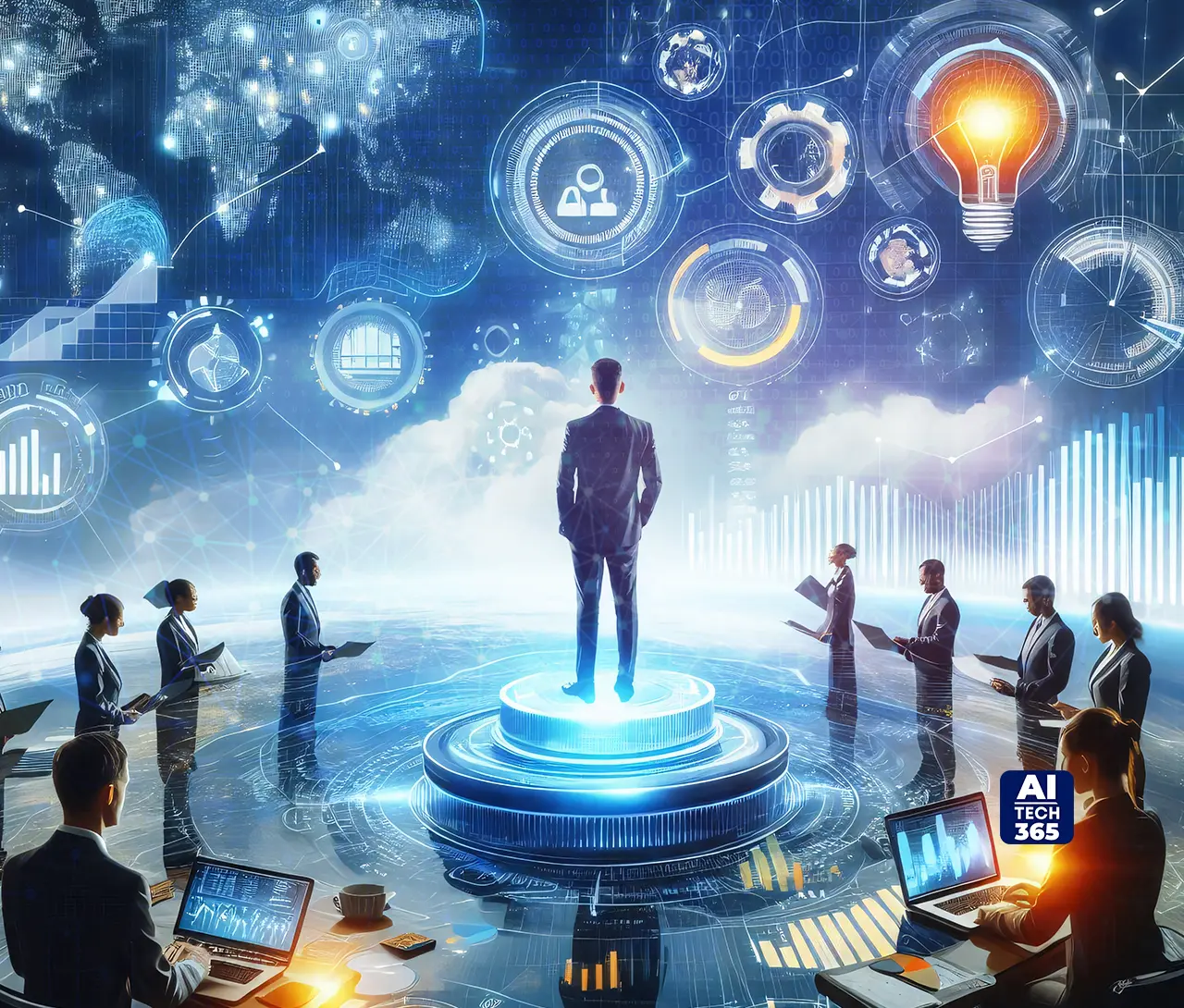The first phase of enterprise AI during the years 2023 to 2025 was marked by experimentation. Proofs-of-concept were carried out, automation pilots were started in companies, and various experiments went on to discover the most suitable business areas where AI could be applied. That chapter is closing fast. The 2026 era belongs to those ready to scale, where AI isn’t a side project but the system running the business.
An AI-driven enterprise is one that treats AI as its operating core, not as another tool in the tech stack. It’s a company where models manage workflows, decisions, and even relationships with customers and suppliers. The findings of the McKinsey’s State of AI 2025 survey reveal that 78 percent of companies are currently employing AI in at least one of their business functions, which is a rise from 72 percent a year earlier. The graph indicates a definite progression of the AI from being just a thought to a functioning ability.
This next phase demands more than adoption. This entails restructuring technology, governance, and leadership models in order to be on the same level with an economy that is more and more dominated by smart systems.
Prediction 1 – The Macro Shift Where AI Becomes the Core Economic Engine
The enterprise world is finally stepping out of the ‘trial phase.’ What used to be one-off experiments with chatbots or analytics pilots is turning into full-scale transformation. AI is no longer an external plug-in, it’s quietly becoming the brain of how companies operate. Oracle’s 2025 announcement of AI agents embedded directly into its Fusion Cloud Applications for finance, HR, and supply chain proves that shift is real. When your payroll, procurement, and customer systems start thinking for themselves, you’re not automating tasks anymore, you’re redesigning the business itself.
Across industries, leaders are realizing that efficiency was just the appetizer. The real meal is growth. For years, AI was framed as a cost-saving weapon, cut time, reduce headcount, increase margins. That story is changing fast. The next wave of value will come from new revenue streams, smarter customer experiences, and continuous innovation loops that traditional workflows could never deliver. Think AI-native finance agents managing end-to-end invoicing, or intelligent HR assistants customizing onboarding down to each employee’s learning style. These aren’t futuristic case studies, they’re how competitive advantage will be built and sustained.
Manufacturing is already showing what this looks like in motion. Predictive maintenance powered by physical AI is reducing downtime before machines even break. In financial services, simulated AI-driven markets are stress-testing risks before they reach balance sheets. Healthcare is taking it further, using AI-augmented diagnostics to spot patterns that doctors can’t see and tailoring therapies for individuals instead of averages. Every sector is essentially rewriting its rules of speed, accuracy, and personalization.
What’s unfolding now is the foundation of the AI-driven enterprise. The winners will be those that stop treating AI as a project and start treating it as an operating principle. Because as AI embeds itself deeper into every system that moves data, money, or people, it’s not just powering decisions, it’s shaping how growth itself gets created. The shift isn’t coming someday. It’s already running in the background, quietly rewriting how value is built in 2026 and beyond.
Prediction 2 – Architectural Evolution and the Rise of Specialized Intelligence
The first wave of AI was about size. Bigger models, bigger data, bigger claims. But scale alone doesn’t cut it anymore. Enterprises are waking up to a tougher truth: generic large language models can’t handle the precision, compliance, and context demanded by industries like finance, healthcare, or law. You can’t rely on a generalist brain to run a hospital or approve a loan. That’s where Domain-Specific Language Models (DSLMs) are stepping in. These are purpose-built models fine-tuned on industry-grade data, trained not just to answer questions but to understand regulations, risk parameters, and specialized workflows. In regulated sectors, accuracy isn’t a nice-to-have, it’s the license to operate. DSLMs deliver that edge.
The architectural shift doesn’t stop there. We’re entering the era of Multiagent Systems (MAS), where intelligence isn’t confined to one monolithic model but spread across orchestrated AI agents working in sync. Picture this: one agent scans market data, another drafts insight, a third reviews compliance before anything goes out. No prompts, no manual babysitting, just a fluid network of AI roles executing autonomously within enterprise systems. The result is a system that doesn’t just respond but actually runs parts of the business. Modular, reusable, and self-improving. It’s the closest thing we’ve seen to digital departments that manage themselves.
Meanwhile, the physical world is getting its own AI upgrade. The rise of edge computing and Physical AI, intelligence embedded directly into robots, drones, and connected devices, is redefining how machines interact with reality. In logistics, AI-equipped drones are mapping routes in real time. In manufacturing, robots learn and adapt on-site instead of waiting for cloud updates. Localized processing keeps data secure while slashing latency, a crucial step for industries where milliseconds matter.
Underneath it all, a new kind of infrastructure is emerging. NVIDIA’s 2025 Annual Review calls these ‘AI factories,’ powered by its full-stack supercomputing platform. They’re not data centers in the traditional sense but intelligent ecosystems designed to train, deploy, and scale AI at industrial levels.
This evolution marks a clean break from the ‘one-size-fits-all’ mindset. The future won’t belong to those with the largest model but to those with the most relevant one. Enterprises that build around specialized intelligence will not only move faster but move smarter, owning the architecture of the next economic revolution.
Also Read: AI in 2026: Trends Every Leader Should Watch
Prediction 3 – The Leadership and Governance Imperative
The AI revolution isn’t just a tech story anymore, it’s a leadership reckoning. The new equation isn’t about hiring more coders but building leaders who can manage ‘mixed teams’ of humans and AI agents. Technical fluency helps, sure, but it’s no longer the hero skill. The real differentiator now is adaptive intelligence, critical thinking, ethical judgment, and the ability to orchestrate collaboration between people and algorithms. According to Accenture’s 2025 research, 87 percent of executives expect jobs to be augmented rather than replaced by generative AI, yet 47 percent admit their workforce lacks the skills to scale it. That gap is where leadership will either win or crumble.
Governance is emerging as the unsung hero of this transformation. What once felt like a compliance checkbox is now the scaffolding for trust. Explainability, auditability, and data provenance are not academic buzzwords anymore, they are the foundation of sustainable AI growth. As enterprises embed AI deeper into operations, the question shifts from ‘can we do it?’ to ‘can we justify it?’ A strong AI Governance Framework covering data quality, bias detection, and model security becomes the enabler of scale. When leaders can trace decisions back to transparent logic, AI stops being a black box and starts being a competitive advantage.
Then comes the quiet but radical shift inside organizations. HR and IT, traditionally two distant planets, are converging fast. You can’t deploy or govern AI systems without aligning people strategy with technical deployment. HR needs to understand digital ethics and data handling, while IT needs to grasp human behavior and skill development. The wall between ‘tech’ and ‘talent’ is crumbling because scaling AI responsibly demands unified leadership across both.
The enterprises that succeed in this phase won’t be the ones with the flashiest models but the ones that train leaders to navigate this hybrid world with clarity and courage. In the AI-driven enterprise, leadership is no longer about knowing the answers, it’s about knowing how to ask the right questions and doing it fast enough to keep the system learning.
Prediction 4 – The Operational Bottleneck of Power and Sustainability
Here comes the less glamorous side of AI: energy. Every model trained, every query processed, burns serious power. The smarter our systems get, the hungrier they become. Enterprises are starting to feel that heat, literally and financially. The demand for compute is forcing IT leaders to rethink their infrastructure. The answer isn’t just buying more servers but investing in AI-ready systems that use energy efficiently and push workloads closer to where data lives through decentralized edge computing.
Sustainability is no longer a checkbox in annual reports, it’s becoming a make-or-break factor in AI strategy. Companies can’t justify massive AI adoption without proving environmental accountability. The focus now is on green data centers, optimized cooling, and low-carbon chips that cut the footprint without cutting performance. The smarter play is clear, innovation that’s not sustainable won’t scale.
Sovereignty is the at the same time, a new worry which is coming up. The tightening of data laws has compelled the companies to move to the cloud providers who are sovereign or regional in order to make compliance and cut down on geopolitical risk. The focus is not solely on the storage location of data but also on the control over it.
The next AI frontier isn’t just digital, it’s physical. The real winners will be those who balance intelligence with responsibility, building systems that think fast without draining the planet.
Leading with Agility and Trust
AI is no longer a department project, it’s the bloodstream of modern enterprise. The next phase will be defined by three forces: pervasiveness, where AI touches every function; specialization, where tailored intelligence replaces generic tools; and the human imperative, where leadership becomes the real differentiator. Intel’s 2025 update captures this shift, noting that AI is accelerating demand for compute and creating massive opportunities at the edge.
The message is clear for leaders. The competitive advantage in 2026 will not come from simply adopting AI but from shaping what it means to be an AI-driven enterprise. Create a strategic AI roadmap that measures ROI with precision. Even more crucial, instill ethics and transparency in the design of every layer. The companies that are quick and honest will not only ride but also set the wave.


